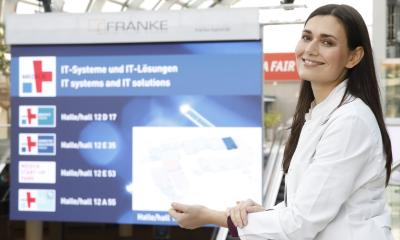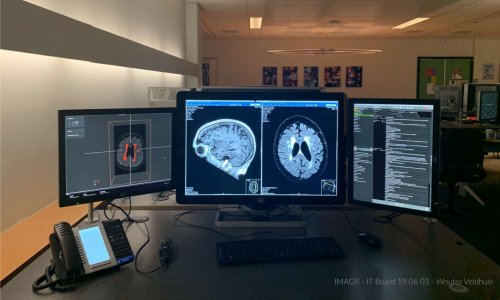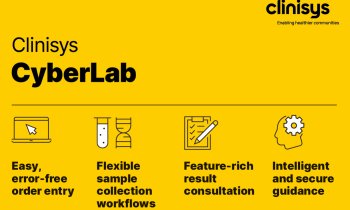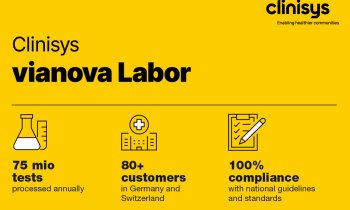Healthcare
Small town hospital goes big on IT
Horsens Regional Hospital is a two-hour train ride from Copenhagen in the Central Region of Denmark. Disembarking at the small town’s train station nothing suggests the presence of a pioneering hospital and flagship facility of the Danish healthcare system. Then, meeting Chief Medical Officer Jørgen Schøler Kristensen and Chief Nursing Officer Inge Pia Christensen it is immediately clear: here are hospital managers on a mission.
Report: Brigitte Dinkloh
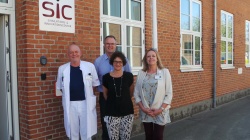
Horsens Regional Hospital is a two-hour train ride from Copenhagen in the Central Region of Denmark. Disembarking at the small town’s train station nothing suggests the presence of a pioneering hospital and flagship facility of the Danish healthcare system. Then, meeting Chief Medical Officer Jørgen Schøler Kristensen and Chief Nursing Officer Inge Pia Christensen it is immediately clear: here are hospital managers on a mission. Understandably proud of their 13-departments and 1,600 hospital employees they present their strategy for 2013 to 2016 which, briefly, is ‘more, better and less expensive’.
Denmark’s public hospitals are urged to increase their operating income by two percent per year and, at Horsens, they are set to meet this target. A pillar of the strategy is the partnership with referring physicians, but, above all, with their patients. Considered responsible and informed citizens, they are fully integrated in the processes as subjects, not objects. As in any modern hospital, IT networking is also a major strategic issue for the staff.
IT networking starts right with every employee. Their location on the ward is centrally displayed using ultrasound technology. Inga Christensen concedes that there were initial concerns about privacy issues and the hospital management was accused of pushing through process optimisation on the back of the employees. However, thanks to successful communication efforts today the hi-tech tracking system is accepted, also because the number of interruptions and disturbances, as well as superfluous calls, has plummeted since the team members have a better overview of one another’s’ tasks.
The medical care data of each Danish citizen are transparent and can be accessed from anywhere across the country. Unthinkable in other countries, a situation was created in which, it seems, all actors – patients, hospitals, referring physicians and payers alike – are satisfied.
Since 1977 treatment data in Denmark have been stored digitally and, in 1994, the countrywide Health Data Network was launched. In 2003 the e-health portal www.sundhed.dk was integrated which allows every citizen to access information on type, length and costs of his or her diagnostic and therapy procedures. The national electronic health record (EHR), introduced in 1999, was initially riddled with problems caused by different competing systems. With the Danish health reform in 2007, when 15 Danish counties were consolidated into five regions, the EHR was harmonised.
‘Before, we had four counties in Central Denmark and eight EHR systems. Around 1,200 clinical software systems were in place, some of them being small clinical department solutions. From 2007 until today consolidation has been the main topic. In 2010, the Columna solution was selected as the unique EHR platform (MidtEPJ) for the entire region of Central Denmark and implemented from 2011 to 2013’, explains Jens Peder Rasmussen, Export Director of the software developer Systematic. Danish hospitals are allowed to share information because the region is a legal entity.
At Horsens Regional Hospital the EHR platform is linked to a clinical information system that covers not only HIS functions but also provides data that document the patients’ care pathway, to provide the optimal treatment for the patient throughout the continuum of care.
This clinical information system in turn is integrated with a workflow solution, a ‘clinical logistics’ module, as Rasmussen explains, to ensure real-time awareness of the patients’ actual status and make that information available across the different wards and functions in the hospital. ‘The combination of vital clinical information and the workflow-oriented information provided by our clinical logistics solution tells the clinical teams where patients are at any given point in time. This improves efficiency and quality of care.’
How the integration of clinical and workflow data works in everyday life can, for example, be witnessed in the emergency department (ED). Each patient registers easily in the lobby with a credit card-sized e-health card signalling his/her arrival and treatment onset to the relevant department and the national network. The data are displayed at the emergency team’s workstations.
‘Medical history data and, since very recently, even data transmitted from the ambulance, are immediately accessible and the status of each patient can be tracked at any point during treatment. Medical images and lab results are also entered in the system and all major parameters are there at a mouse click, so the physician in charge can initiate necessary steps without delay’, explains Ove Gaardboe, senior physician in the emergency department. Transparency and openness offer tangible benefits: on average patients admitted to the ED are discharged within 48 hours.
In the operating theatres (OTs) planning with note pads and memo boards lies in the past. Large screens provide OT manager Marie-Louise Ulsøe and team with a precise overview of activities in the different theatres. A live camera even offers images from the theatres.
In the clinical logistics system, jointly developed with the hospital, sources of errors were reduced and the OT utilisation optimised. From 2010 to 2012 Horsens Hospital was one of five others in Denmark to participate in the Safer Hospital Programme, which managed to reduce 30-days mortality by 15 percent and the number of unintended incidents by 30 percent, Jørgen Schøler Kristensen, Chief Medical Officer and CEO of the hospital, reports. The most important factor, he emphasises, was the change in culture. ‘We could overcome rivalries and to start looking at the patients as fellow citizens.’
Details:
10.10.2014



